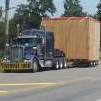Dead stick instrument approach
-
Members Online
- Rmnpilot
- Jay Bird
- MDMooney
- OSUAV8TER
- ta2too
- LANCECASPER
- wombat
- Ragsf15e
- EricJ
- Hank
- wivika2537
- TCC
- Matthew P
- JimK
- PT20J
- dzeleski
- richardbrochu27
- M20F
- CChris
- McMooney
- GeeBee
- jrod_stat
- carguy4471
- AH-1 Cobra Pilot
- 802flyer
- Mamkeci
- Bigdaddie
- Denis Mexted
- Medflyer
- Matt_AZ
- ajudson
- Mooney in Oz
- 0TreeLemur
- RescueMunchkin
- Graf_Aviator
- jrwilson
- 7.Mooney.Driver.0
- alextstone
- dkkim73
- mooneyflyfast
- cferr59


Recommended Posts
Join the conversation
You can post now and register later. If you have an account, sign in now to post with your account.